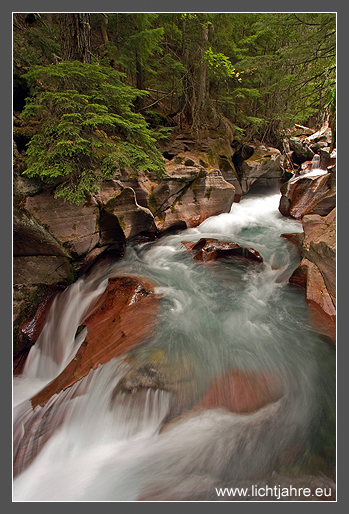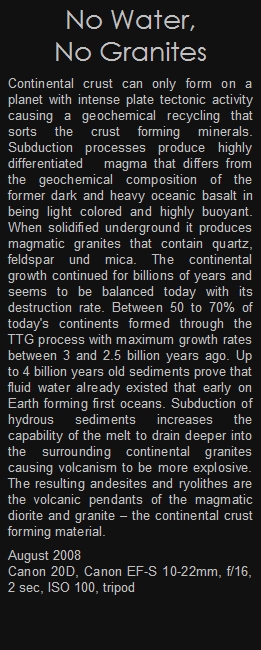

No Water, No Granites
Continental crust can only form on a planet with intense plate tectonic activity causing a geochemical recycling that sorts the crust forming minerals. Subduction processes produce highly differentiated magma that differs from the geochemical composition of the former dark and heavy oceanic basalt in being light colored and highly buoyant. When solidified underground it produces magmatic granites that contain quartz, feldspar und mica. The continental growth continued for billions of years and seems to be balanced today with its destruction rate. Between 50 to 70% of today's continents formed through the TTG process with maximum growth rates between 3 and 2.5 billion years ago. Up to 4 billion years old sediments prove that fluid water already existed that early on Earth forming first oceans. Subduction of hydrous sediments increases the capability of the melt to drain deeper into the surrounding continental granites causing volcanism to be more explosive. The resulting Andesites and Ryolithes are the volcanic pendants of the magmatic diorit and granite – the continental crust forming material.
August 2008
Canon 20D, Canon EF-S 10-22mm, f/16, 2 sec, ISO 100, tripod




















